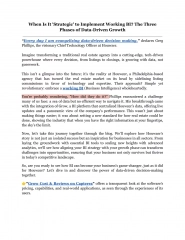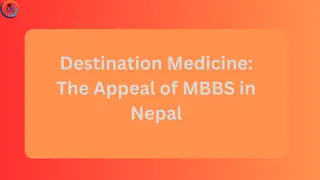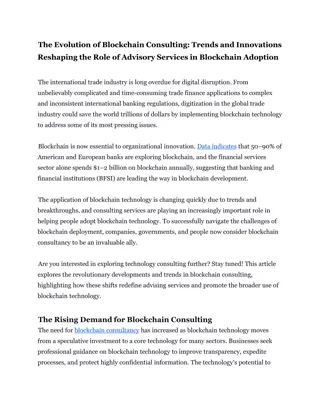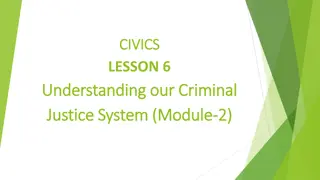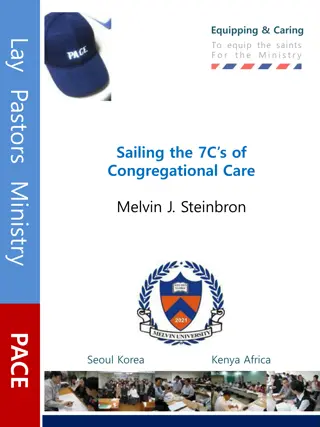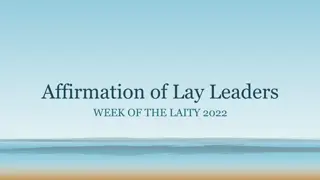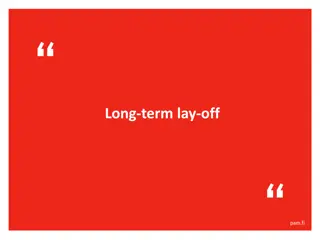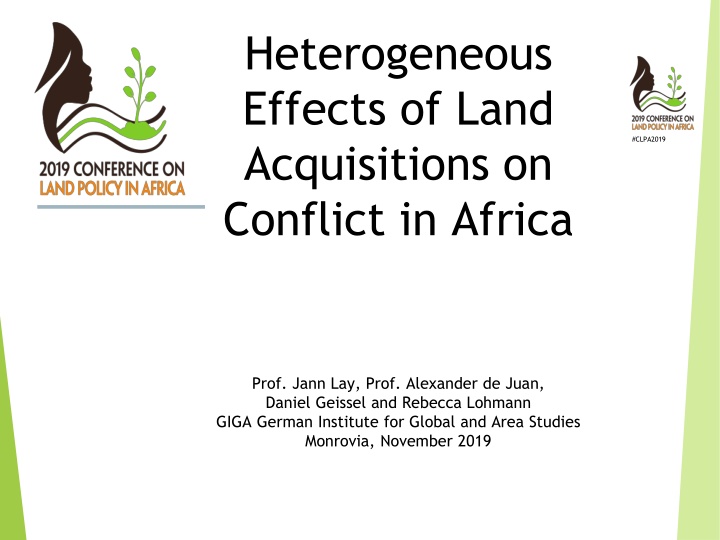
Insights into Land Acquisitions' Impact on Conflict in Africa
Discover the heterogeneous effects of land acquisitions on conflict in Africa, as discussed in a research presentation at the #CLPA2019 event. Explore the potential risks and consequences of large-scale land acquisitions, their relation to violent conflicts, and how data analysis sheds light on these issues.
Download Presentation

Please find below an Image/Link to download the presentation.
The content on the website is provided AS IS for your information and personal use only. It may not be sold, licensed, or shared on other websites without obtaining consent from the author. If you encounter any issues during the download, it is possible that the publisher has removed the file from their server.
You are allowed to download the files provided on this website for personal or commercial use, subject to the condition that they are used lawfully. All files are the property of their respective owners.
The content on the website is provided AS IS for your information and personal use only. It may not be sold, licensed, or shared on other websites without obtaining consent from the author.
E N D
Presentation Transcript
Heterogeneous Effects of Land Acquisitions on Conflict in Africa #CLPA2019 Prof. Jann Lay, Prof. Alexander de Juan, Daniel Geissel and Rebecca Lohmann GIGA German Institute for Global and Area Studies Monrovia, November 2019
Previous research on LSLA violent conflict Competing expectations on LSLA effects Negative income effects, displacement, land scarcity vs. employment creation, infrastructure development (Jiao et al. 2015; Schoneveld et al. 2011; Nolte et al., 2016; World Bank, 2011). #CLPA2019 Mainly single case studies on LSLA and conflict LSLAs can increase competition over land and job opportunities, raise horizontal inequality among groups and thereby create state-society and communal tensions (Jensen/S ensen, 2012; Deininger et al. 2011; De Schutter 2009). Aggregate quantitative analyses Only few cross-case studies; analyses are spatially and conceptually aggregated country-level, no differentiation of types of violence (Balestri/Maggioni 2019; Krieger/Meierrieks 2016). Little systematic evidence on specific effects of LSLA on conflict
How can LSLA increase the risk of violent conflict? - Potential differential effects of LSLA on different types of violence #CLPA2019 LSLA Violent mobilization (Expected) Negative repercussions of LSLA may motivate local mobilization against investors and/or the state State repression Communal violence The state may apply (preventive) violent repression in order to prevent any local resistance that may jeopardize the LSLA LSLA increase land scarcity and provide new job opportunities; both processes may instill distributional conflicts
Data Land Matrix: 1500 investments since 2000 Armed Conflict Location & Event Data Project (ACLED), 1997 2019 observational unit: grid-cells from the PRIO-grid database with 0.5 x0.5 , translating into 2500- 3000km (variation due to projection) location information only in form of point data with information about the size we create circular buffers used to create a dummy variable for the presence of an LSLA #CLPA2019
Data on violent conflict - The Armed Conflict Location & Event Data Project (ACLED) #CLPA2019 Academic/non-governmental initiative; collates georeferenced data on political violence and protest around the world Includes events that occur within civil wars and periods of instability, public demonstrations, and regime breakdown. ACLED s aim is to capture the forms, actors, dates, and locations of political violence
Data on violent conflict - Measurement of outcome variables #CLPA2019 Actor-based differentiation of three type of violence in ACLED data: LSLA State repression Violent mobilization Communal violence State security agencies or political militias vs. Civilians State security agencies or political militias vs. Protesters, rioters, communal militias Communal militias, protesters, rioters vs. Communal militias, protesters, rioters, civilians
Descriptive analyses - temporal development of violence relative to LSLA onset #CLPA2019 Average event incidence (y/n) over time; sample of grid cells that have experienced at least one LSLA
Descriptive analyses - effects of LSLA on conflict over time relative to other areas #CLPA2019 Average event incidence (y/n) over time; sample of grid cells that have experienced at least one LSLA compared to matched control group (coarsened exact matching based on pre-treatment covariates; LSLA dates of matched treated unit)
Descriptive analyses - effects of LSLA across types of violence #CLPA2019 Average event incidence (y/n) before and after LSLA; sample of grid cells that have experienced at least one LSLA (1) compared to matched control group (0)
Regression analyses - effects of LSLA across types of violence Repression Mobilization Communal #CLPA2019 LPM, unit fixed effects, standard errors clustered per unit, all models include cubic polynomials to account for time dependencies
Heterogeneities forms of violence are affected differently, strong effects on repression and mobilization #CLPA2019 important dynamics in relation to conflicts, e.g. conflicts rise in anticipation of large-scale land deals important transmission channels (expectations on) land loss and distribution (expectations on) employment effects investigated via a survey in Liberia in the proximity of two large plantations so far first insights and anecdoctal evidence, the survey is so far partly implemented
Study Regions in Liberia #CLPA2019
Case Study: Liberia Sime Darby and Equatorial Palm Oil (EPO) #CLPA2019 investors took over old plantations and partly expanded Sime Darby transformed rubber into oil palm plantations EPO replanted oil palm new investors displaced few people land rights EPO is indemnifying communities that have been affected 50 years before from the prior investor now people are mobilizing against new intentions of plantation expansions
Case Study: Liberia employment: #CLPA2019 people have high expectations towards employment possibilities on the plantations in the Sime Darby region labour-intensive rubber plantations were replaced with oil palm expectations on employment possibilities are hard to meet precarious working conditions irregular and unreliabe salary payments particular forms of employment via sub-contractors, i.e. many workers do not have direct contracts with the plantation company Sime Darby has been laying off many workers recently and it said to abandon the investment
Outlook completion of data collection and systematic analysis of the effects of employment and land loss on household welfare and conflict implications #CLPA2019 Who gets the jobs? Which households are particularly affected by land investments? Beyond the Liberian case: further investigation of the dynamics including of the implementation status of projects, e.g. project failure systematic investigation of the context factors, e.g. conflict history, quality of institutions and ethnic composition
#CLPA2019 Merci beaucoup Thank you

